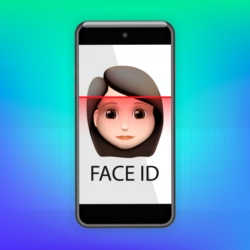- Developers
- Developer Blog
- Software Development
- How to Write a Functional Specification Document?

profile

By Aran Davies
Verified Expert
8 years of experience
Aran Davies is a full-stack software development engineer and tech writer with experience in Web and Mobile technologies. He is a tech nomad and has seen it all.
Are you wondering how to write a functional specification document?
The good news is that you have come to the right place.
Nailing your functional specifications document is vital if you want to build a great new app.
A functional specification document is a key deliverable when you undertake a software development project. You can’t overstate the importance of writing the functional requirements effectively. Your requirements document forms a key asset in the software development process.
How to write a functional specifications document though? We explain that in this article.
How to create an effective functional specification document
Consider the following steps to create an effective functional specification document (FSD):
1. Onboard the right people
We talked about the importance of functional requirements already. Naturally, you need to define them effectively and document them well. That will provide your software app development team with a set of clear and well-written requirements.

Get a complimentary discovery call and a free ballpark estimate for your project
Trusted by 100x of startups and companies like
An FSD is a key one among your project deliverables. When you consider the importance of this task, it’s obvious that you need the right people for it.
Since this phase is still early in your project lifecycle, you don’t need to onboard your entire development team yet. However, you do need to onboard the following roles for this task:
- A project manager (PM): Defining functional requirements require intense discussions with many stakeholders including end-users. Project management including stakeholder management is important here, and you need a competent PM.
- A software architect: Functional requirements and NFRs influence the technical solution of your project greatly. You need to onboard an architect when developing an FSD. This allows the architect to understand the functional spec first-hand, which helps in building the technical solution.
- A team of business analysts (BAs): BAs will elicit requirements from users. They will document them clearly. BAs will also create user stories, use cases, and use-case models.
2. Choose tools and templates for creating a functional specification document (FSD)
You now need to choose the right tools and templates to create an FSD. Do the following:
- Use a popular office software suite like Microsoft Office 365.
- Utilize a popular flowchart tool like Microsoft Visio to create user flow diagrams.
- Find a suitable template to create your FSD.
Note: You can explore the organizational process asset library in your company for an appropriate FSD template. Alternatively, you can explore popular software engineering process-related websites to find a suitable template.
3. Elicit business requirements to create the functional specification
As the next step, elicit business requirements from the relevant stakeholders including end-users. As we have explained in our guide about creating MVPs (Minimum Viable Products), this involves the following steps:
- Study the product/project idea. Gather information from the market or other relevant sources.
- Prepare a list of business stakeholders that you should interview for eliciting requirements of a business requirements document.
- Conduct “Discovery sessions”. These are structured sessions where you meet the business stakeholders. Plan for these sessions adequately so that you can get sufficient time from the business stakeholders.
- Gather information about what the business users need. Understand from them what constitutes “value” to them.
- Find out the pain points of the business users, and understand from them the solutions they need.
- Understand from them how they intend to use the software application.
- Find out the metrics that would indicate the success of the application.
- Use tools like the “Pain and Gain Map” to denote which proposed feature will resolve which pain point of the business users.
- Utilize tools like the “Prioritization matrix” to prioritize features.
4. Document use cases and create use-case models
You don’t necessarily have to create use cases and use-case models while creating an FSD. However, they can add value.
Use cases describe how an end-user realizes value from a software system. You can describe the user interface, furthermore, you describe how an end-user navigates it for each functionality.
You can create use cases for your user stories. This includes flowcharts that describe how the system works and how end-users navigate it. Based on these use cases, you can create use-case models.
Hire expert developers for your next project
1,200 top developers
us since 2016
Adding use cases and use-cases models to your FSD enhances it significantly. FSD is text-intensive, whereas, use cases are diagram-intensive. When you use both, you can help business users and software engineers to understand the FSD better. We recommend you use this approach.
5. The “Must-Haves” when creating a functional specification document
Naturally, the nature of your proposed application will determine what you write in an FSD. However, certain areas need a high focus. These are as follows:
- Explain all system dialogs in detail when you write the functional specification documentation.
- Developers should know how the system handles error reporting. Elaborate on this aspect sufficiently in the functional design.
- A good functional requirements document should include appropriate descriptions of all system interfaces. This carries plenty of importance since the software architect will use this information while creating a technical solution.
- User authentication carries plenty of weightage. An effective functional requirements document should explain the authentication requirements clearly.
- User access and authorization are important aspects. Include these requirements in sufficient detail when writing an FSD.
- You will likely need to meet one or more regulatory requirements. These could include data privacy, information security, transparency, and other regulatory requirements. Explain these requirements in detail.
- An application system might need to have specific certifications. This becomes especially important if you are operating in a heavily-regulated sector like healthcare or banking. Document all your certification requirements clearly in the functional design document.
- You need to talk about transaction creation, adjustment, validation, approval, etc. Most applications require a series of steps to process a transaction from end to end. Transaction validation rules are important too since they help you to maintain the integrity of a transaction. Explain the entire transaction process.
- Every software system has dependencies and constraints. Ensure you describe them in detail in your functional requirements document.
- You might need reporting functions in your proposed application. Explain the reporting requirements in sufficient detail. You should include details like the structure, granularity, frequency, etc. for the reports.
6. Follow the best practices to create a functional specification document
Creating an effective FSD can be hard. However, you can follow the appropriate best practices to make it easier. These best practices are as follows:
- Use simple language to write an FSD.
- Avoid jargon and provide clear explanations.
- Think of the perspective of business stakeholders, and write in a way that they can understand the FSD.
- Remember that developers and testers will use the FSD. Developers will use it for coding, whereas, testers will use it to create test cases. Write the FSD in a way that both developers and testers can use it.
- Use diagrams and flowcharts where applicable.
- Include mockups and wireframes in the FSD. This helps you to clearly explain the requirements. Mockups and wireframes greatly help the user interface (UI) designers too.
- Remember that a functional specification document is an important tool for you to manage the project scope. Explicitly mention everything that you have excluded. This will help you to prevent scope creep in the future, which is important from the project management aspect.
7. Get the functional specifications documents reviewed
You need to conduct a thorough review of the FSD. Take the following steps:
- Form a review team with representations from the business and technical teams. Include business users, architects, development team leaders, software testing team leaders, etc.
- Ensure that the team conducts a structured and systematic review.
- Review whether the FSD matches the project scope.
- Evaluate whether the business and technical teams can clearly understand the functional requirements.
- Track, resolve and close all review comments.
Note: Finding expert reviewers can be hard, therefore, plan for it ahead of time.
8. Get the functional specification document approved
You now need to execute a key step in your requirements management process. This concerns getting the FSD signed off by all relevant stakeholders. Use an appropriate version control tool to manage the functional design document.
Any changes to the FSD must follow a change-control process. This is a key aspect of the project management process, and it will help you to prevent scope creep. Irrespective of the software development methodology you follow, this step is important before the start of development.
Summing up
In this article, we discussed what a functional specification document should have. Finally, we talked about how to write an FSD and the associated best practices.
Hire expert developers for your next project
If you need help in developing market-competitive software products including their requirements specifications, DevTeam.Space can assist you via its field-expert community of software developers and project managers.
Write to us your initial requirements and we will get back to you to discuss how we can help.
Further Reading
Here are a few articles that might also interest you:
Want to know how enterprise companies will use VR and AI to succeed? This is a very interesting question. According to a study done by Grand View Research, "The global artificial intelligence market size is expected to...
Continue readingHow to build an identification app is perhaps a key question if you are targeting this space. Organizations and individuals continue to look for user-friendly and simple solutions. Thanks to technology solutions, you can meet their...
Continue readingWondering how can blockchain improve the food industry? This is a great topic that we will cover here Blockchain in the Food Industry Bacterial contamination is only one of the risks that our food faces. This article relating to the 10...
Continue readingFrequently Asked Questions
Functional requirements are a set of rules or needs that define how an application is going to function and ultimately the purpose it will fulfill.
Certification Requirements.
Business Rules.
Reporting Requirements.
This article on DevTeam.Space blog discusses different functional specification templates and where to find them.

Alexey Semeney
Founder of DevTeam.Space
Hire Alexey and His Team To Build a Great Product
Alexey is the founder of DevTeam.Space. He is award nominee among TOP 26 mentors of FI's 'Global Startup Mentor Awards'.
Alexey is Expert Startup Review Panel member and advices the oldest angel investment group in Silicon Valley on products investment deals.





